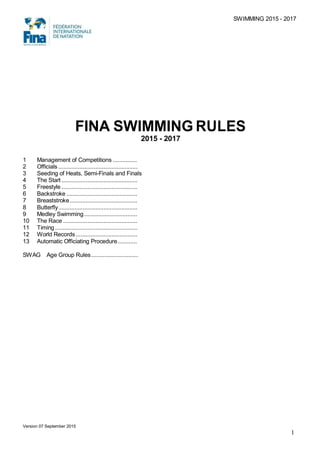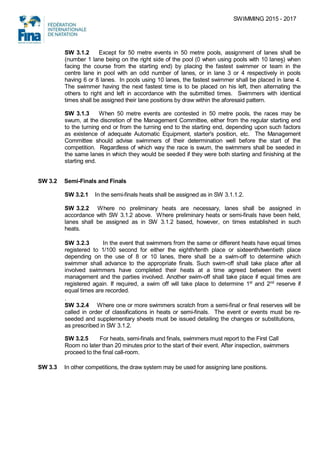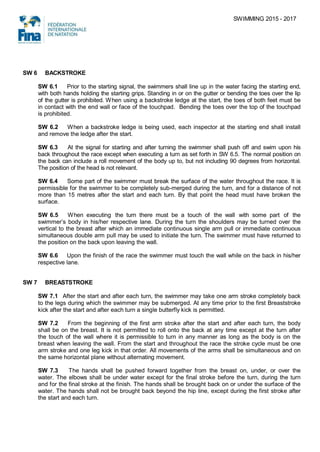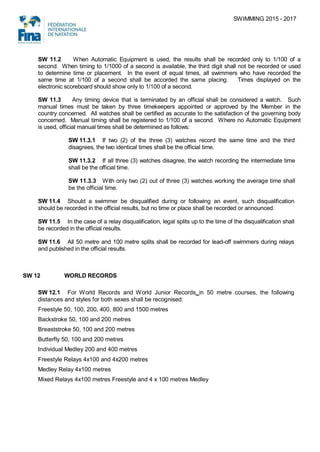This document outlines the FINA swimming rules for 2015-2017. It details rules around competition management, officials and their roles, seeding procedures for heats, semi-finals and finals, the start, styles of swimming (freestyle, backstroke, breaststroke, butterfly, medley), timing procedures, and world records. Key officials include the referee, control room supervisor, starters, inspectors of turns, judges of stroke, timekeepers, and chief recorder. The seeding section specifies procedures for assigning swimmers to heats and lanes based on submitted times.

















